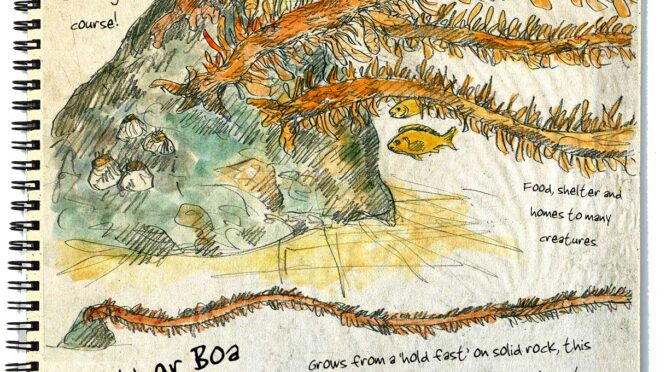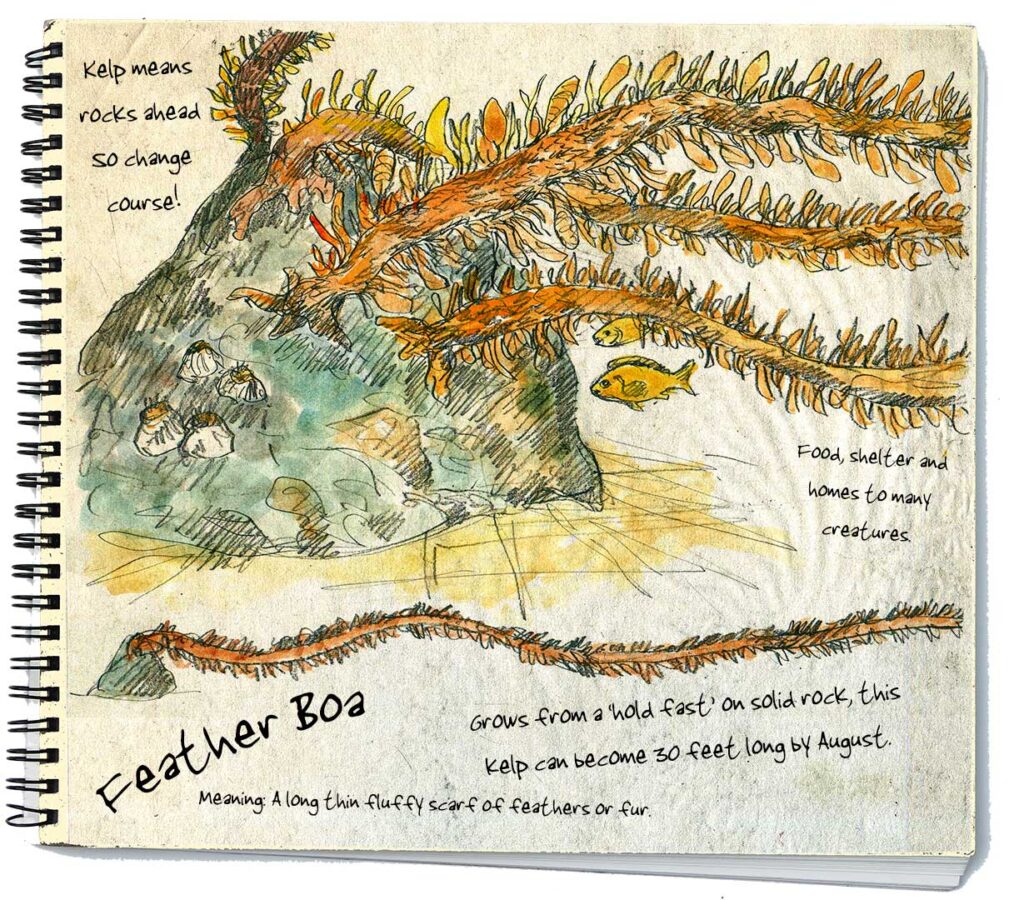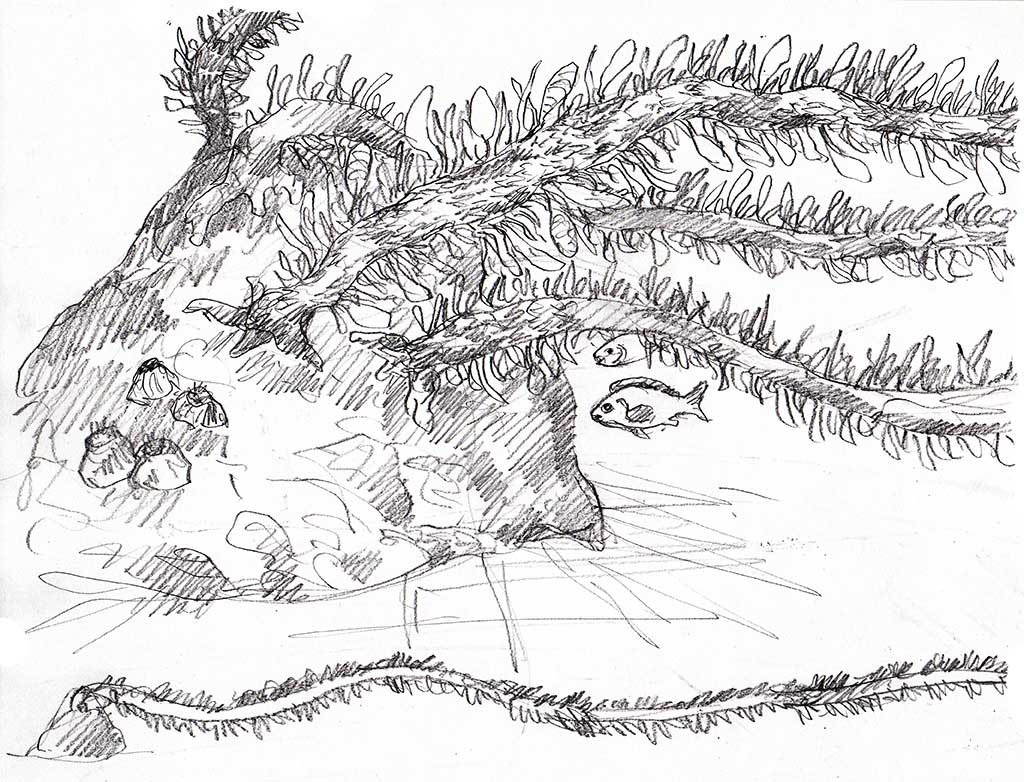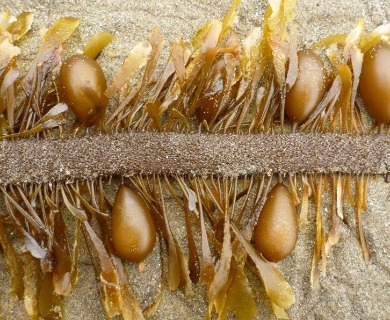With this August 2021 edition, I’ve now done about 110 of these pages, and while I’ve been considering possibly NOT doing any more, I mean, how long can this go on? But I’ve just learned so very much about the Salish Sea by making these pieces of art, researching the details, that I really can’t stop. I see now that you can never learn too much about this stuff, especially in the middle of my seventh decade. It’s all the fine details about how these things live, how amazing it all is. And besides, it’s really fun to spot something interesting and rush home to write about it – paint it.
Here’s the original drawing, which I did some of while walking Port Townsend’s North Beach at low tide. A VERY low tide, possibly the lowest of the year. All this feather boa kelp was strewn about on the sand, making great abstract forms and shapes.
So, I wrote this in the 2021 August issue of 48 North.
Saw this feather boa on a low-tide beach walk. There was a sandy beach, solid boulders, a place where currents flow – and all that equals kelp. There are at least 140 types of brown seaweeds here in the Northwest and they all work in similar ways. The permanent base attaches itself to solid underwater rocks. These are usually on underwater reefs and onshore rocks down to about 50 feet deep. If you see kelp floating up ahead of you, there can only be one reason it’s there – ROCKS!
By summer, this plant joins the other kelps in creating real forests of lush green and brown plants waving in the current. While bull kelp stipes (the trunk) and blades (the leaves) can grow 100 feet a season, the feather boa gets to be about 30 feet long, and in my mind it’s the most beautiful of them all. Based on a single velvet-looking stipe about an inch wide, several different types of blades branch off in wild profusion. There are gas-filled bladders that hold the plant up towards the light like little life jackets, single leaves that look like tiny willow leaves, and skinnier lateral branches that look like twigs with smaller blades at each end. The entire thing is shimmery golden brown.
These plants are key habitat to almost countless other creatures and food for many crabs and snails, sea slugs and fish. When you spot feather boas on the beach at low tide, carefully turn over the blades and see what surprises await you. It’s possibly the best reason to come here.
To end, there are lots of parts in this thing. There’s the ‘main stem’ that looks like velcro. Then along the edges are bladders filled with gas so it floats up into the current. The leaves in between provide the photosynthesis to make it live that are all sorts of shapes and sizes, very random. All this on something possibly 20 feet long, and it all grows from a root clinging to an exposed rock, each and every summer!
Larry Eifert paints and sails the Pacific Northwest from Port Townsend. His large-scale murals can be seen in many national parks across America, and at larryeifert.com.
Thanks for reading this week. You can sign up for emails for these posts on my website at larryeifert.com.
Larry Eifert
Here’s my Facebook fan page. I post lots of other stuff there.
Click here to go to our main website – with jigsaw puzzles, prints, interpretive portfolios and lots of other stuff.
Nancy’s web portfolio of stunning photography and paintings.
And here to go to Virginia Eifert’s website.
[previous title] — [next title]



